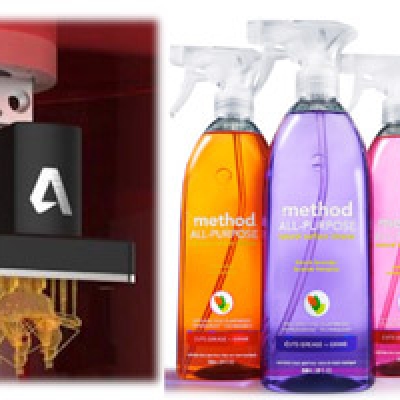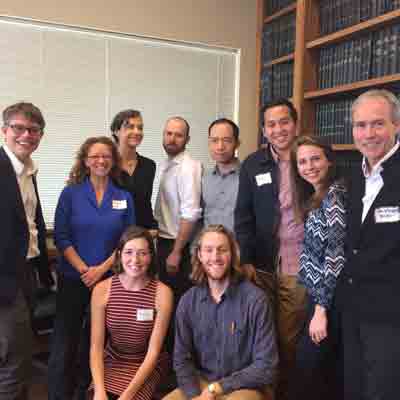Greener Solutions 2015

Sustainable stain-removal and biology-based 3D-Printing
Congrats to the graduates of Greener Solutions 2015! In this year’s program, students worked with Autodesk to develop safer and more sustainable resins for 3d printing, and with Method to develop laundry detergents that work effectively in cold water, low-energy wash cycles.BCGC staff and faculty including Marty Mulvihill, Meg Schwarzman,Tom McKeag, and Heather Buckley teach the Greener Solutions course, now in its fourth year. The students work in groups and consult frequently with their industry clients, and at the end of the course present their partner organization with a detailed report and recommendations. The course is built on the idea that health and sustainability impacts of a product should be considered from the beginning of the design process.
On December 8, 2015, this year’s participants—nine graduate students from several different departments—presented their results to an equally diverse audience that included EPA officials, Autodesk and Method employees, and campus faculty. The two student teams, one working for Autodesk and the other for Method, each presented several ideas for how to address their clients sustainability problems.
Though they are providing a service to an outside company, the class is not only about learning professional skills. Mulvihill, Schwarzman, and their co-instructors guide the students work by teaching them about green chemistry design principles, public health, and how to incorporate knowledge from diverse disciplines to solve problems. Students begin the course by learning about biomimetic design, and how to look to nature for inspiration, and this biological inspiration was evident in many of the solutions they proposed for 3d printing and laundry detergent.

Two particular inspirations from nature inspired the Autodesk team for their process innovation: the mussel and the oyster. Both are marine invertebrates that must turn adhesive liquids into solids in a hurry under demanding underwater conditions. How they accomplish this was key to some of the longer range solutions proposed.
The student team assessed the current formulas being used in the industry after being trained briefly in chemistry, toxicology and public health research. They then looked at nearly a dozen bio-inspired concepts.
These concepts included solving problems across a hierarchy of linear scales, composite construction, functional grading of material, and using water as a medium and ambient conditions as activators. The challenge was to translate some of these nature-based concepts into actionable recommendations for resins that reconciled the performance requirements of printers and reduced the hazard to humans and the environment.
Method was looking for something entirely different: a low temperature laundry cleaner for oil-stained clothes. Seventh Generation, and two chemical manufacturers, Amyris and BioAmber, were interested in this goal as well, and also supported the course. Removing oily stains from clothes takes energy of some kind: chemical, thermal or mechanical, and finding an alternative to heavy detergents, hot water and a lot of spinning is a path to reducing this energy use, one of the biggest life cycle impacts of laundry operations. The team crafted a design brief for themselves that comprised using existing mechanical appliances, operating in water of 5-20 degrees C, exhibiting low toxicity to humans and the environment, and biodegradability. The solutions they proposed ranged from natural enzymes that could be incorporated into a stain remover or detergent, to an entirely new product idea: an object with oil-adhesives surfaces that could sit in the washing machine during a wash cycle to attract grease from clothes.
Autodesk, Method, and the rest of the audience was very enthusiastic about the student proposals, and some of the class members may continue working with their clients outside the scope of the class. Billy Hart-Cooper, a PhD student in the College of Chemistry, worked with Method as part of last year’s Greener Solutions course, and still works with them as an independent consultant to continue the work he started in Greener Solutions. Autodesk has also hired a Greener Solutions alum, Justin Bours, who helped this year’s students with their project.
